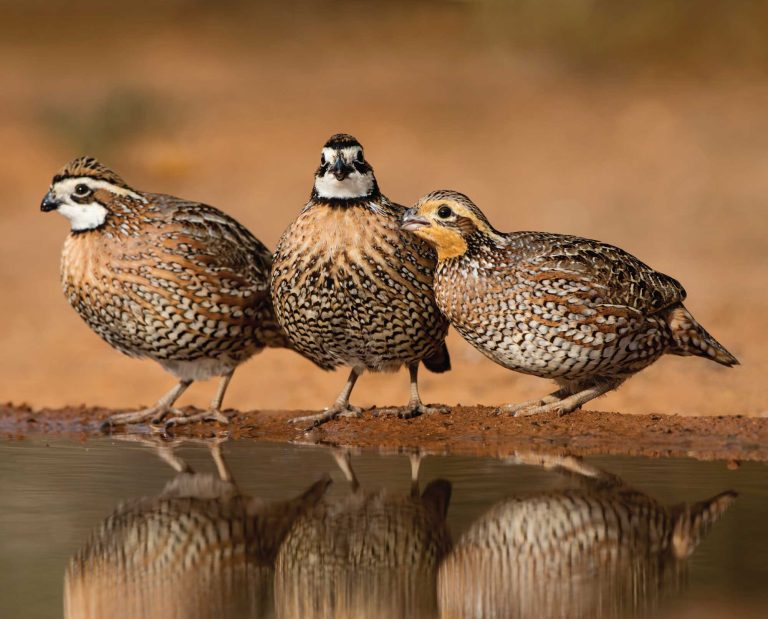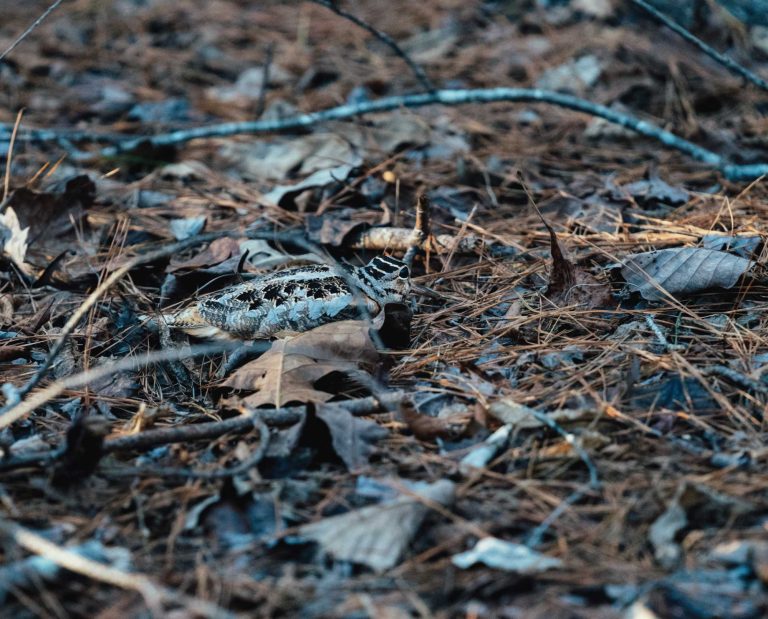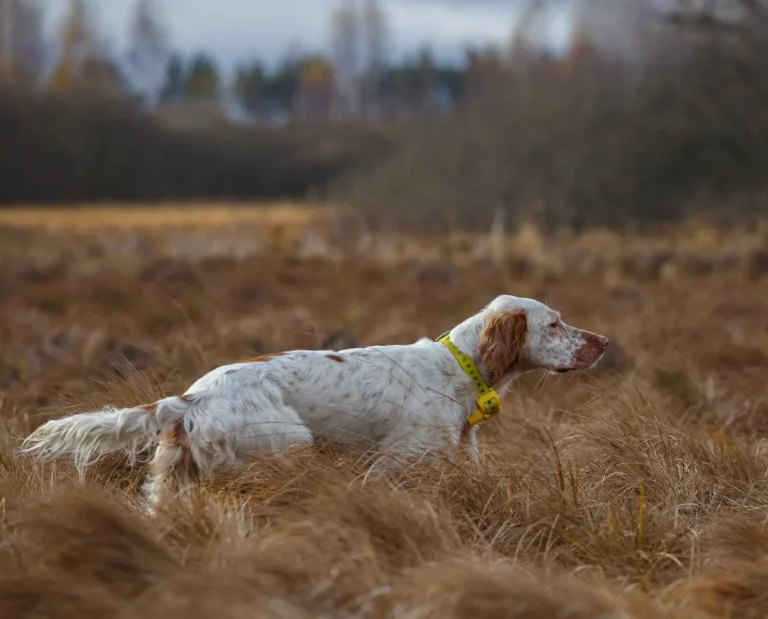Understanding the Threat Response of Ruffed Grouse in Hunting

Musing on the accelerated evolution of grouse behavior and grouse hunting tactics.
A decade ago I wrote a book, The Urban Deer Complex. Growing up just outside of Boston, I was fascinated by the idea of whitetail deer being able to adapt so well to human environments. It inspired a whole section of the book I labeled “The Science of Fear.” Through rapid evolution accelerated by an encroaching urbanized environment, whitetails were able to pass down behavior that would allow them to distinguish between non-threatening and threatening human behavior. That ideology would subsequently put many a deer on my dinner table over the years, and although it is more complex than the summary here, I never thought it could apply to ruffed grouse.
At the time, I had yet to read the classic New England Grouse Shooting, written in my hometown by William Harden Foster. Foster made a clear indication to the increasing evasive nature of ruffed grouse and their responses to human pressures. He even credits this intelligence to the reason ruffed grouse survived the early market hunting days of New England while their cousins the Heath Hen fell victim, unable to adapt.
“Yes, we all hear about the birds that are reported to be shot over solid points, but these are nowhere nearly as common as they once were, regardless of the excellence of the modern grouse dog, or the advanced hunting knowledge of the shooter. This is all because our New England grouse of today has become ultra-educated and an expert in organized retreat.” Fosters words could spill off the pages of modern publication and be as true as ever.
Ironically, the more deeply I dove into grouse hunting the less I thought about the idea of the conditioned responses of my quarry. A few times subtle remarks about grouse behavior from biologists got my wheels turning for a moment, but they always came to a halt.
Then I got a bird dog.
My dog, a wirehaired pointing griffon, Grim, would begin to walk almost like grouse when he would ground-scent the birds in his first season. He would slow his pace and eventually point, only to continue on before pointing again and again and again. Eventually the bird would get up and my second thoughts about his nose would be laid to rest. As simple as it sounds that all happened because the grouse would run ahead of the dog, reducing pressure and evading the predator which sparked in my mind the threat response of whitetail deer.
In a way, ruffed grouse are like wild turkey. They are all about living their life taking flight as seldom as possible. Other than roosting in a tree, crossing a body of water, or evading predators, they utilize flight minimally. They want to walk in thick cover, well away from the scores of predators that would be happy to make a meal of them. Humans and bird dogs included.
I remember Andy Weik, Northeast Regional Biologist of the Ruffed Grouse Society, once saying to me on the edge of a thick cover, “This is where birds die.” To be fair, his version sounded more elegant, and though I cannot recall the exact words, that idea resonated with me. Once I added a bird dog to the equation, I began to mull over some simple questions. Where do birds flush, why do they flush, and how do I put myself in those places more often?
Where and Why Ruffed Grouse Flush
The where is mostly connected to the why. For the most part, a grouse will stay well ahead of bird dog if possible, especially if it’s repositioning on points at a slow pace. A grouse can play this game all day and won’t typically flush until the cover ends or manipulates the bird in a such a way that it does not feel comfortable. Unless of course enough pressure from the dog or the hunter is put on the bird causing it to freeze, or pin (more about that later).
Ruffed grouse will certainly flush in thick cover, which is distinct feature of ruffed grouse habitat, but again it’s usually a last resort. The classic Ripley paintings come to mind. A setter that surprised and pinned a grouse via some quick footwork. The suddenness of it all limits the bird’s options, forcing stillness over flight in hopes that feathery camouflage will prevail and the threat will pass. Yet the nose knows. A good bird dog can smell through the camouflage and indicate to the hunter that in fact there is a bird near. The bird will then flush when the pressure of the hunter walks the point out and forces the last remaining evasive tactic.
I think it’s important for all the novices of the world to understand that while a grouse cooperating by not continuing to run is the goal of the hunter, it does not happen all the time. Often the grouse will run out from under a point or be bumped (unintentionally flushed) by a dog that wasn’t cautious enough or did not have the right wind. It’s a beautiful thing when it does happen, and once you have experienced it you will understand why many of us chase that perfect, yet difficult to achieve moment. We often get hung up on ideas of how we want grouse to act rather than the reality of how they do act.
Now we have established that grouse will run, and run, and run until either the cover ends or the pressure overwhelms them.
How to Be Where the Pressure Is
Last year my dog went on point in a cover not a few miles from my house. Grouse numbers are low in this area and we tend to pay more attention to the woodcock. On this day however Grim and I were itching to get out. Our schedule would not allow the two-hour drive to better grouse cover and the woodcock were long gone.
The first point came at the edge of “dark cover” (softwoods) as they say in Maine, where the fir is so thick it’s dark inside the cover in broad daylight. I knew there was no hope of a shot if I stuck with Grim. Maybe I would catch a flash of wings but by the time I reacted and the bird reached a safe shooting height it would be invisible. So I got clever (read: desperate).
I moved at a brisk pace along the trail that followed/paralleled the cover and figured, “Why not get ahead of the bird?” After 75 yards or so, I cut into the cover. I thought for a moment about waiting in the open for a clear shot, but the strip of fir had seemingly swallowed me and God knows where that infamous edge would be.
I looked back towards where Grim was and saw him slowly creeping along, heading straight for me. My eyes scanned the ground wondering where the bird was. I saw nothing. As Grim closed the distance I finally decided to walk towards him. Then he stopped. As he stood there frozen, his nostrils flaring and the intoxicating huffs exited his muzzle, I realized the silence had been broken by thundering wings. My eyes picked up the bird and I made my move. A load of No. 8 shot through a cylinder bore of my grouse gun did the trick. And in that moment, I felt like I had solved a great grouse riddle. In fact, I confirmed it again not 30 minutes later.
Now to be candid, that riddle was something I’d read in the book “A Hunter’s Road.” The author was given a piece of advice on how to increase his odds on grouse. And so the story goes after days of defeat he learned this tactic and shot his limit on birds. Mind you, he was using a Labrador which plays a different game than pointing dogs — but flushing dogs get birdy and handlers know how to read their flushing dogs just like a pointing dog. Other than the pace and the range at which the game is played, there is little difference. It remains king of the birds versus man and beast. And I am convinced that this was the secret tactic. Jim Fergus, if you ever read this, maybe you will reveal the secret!
To put it simply, instead of hoping that the cover and/or my dog pinned the bird, I used myself to apply multidirectional pressure on the bird. As if my pup and I were pushing and blocking on a pheasant hunt, I got ahead of the dog while trying to predict the path of the bird. Predicting that path is woodsmanship, a skill often cast into the realms of big game and turkey hunting. Yet it can apply to upland bird hunting just the same.
Ruffed Grouse Do Not Act the Same Everywhere
There is one more piece to this puzzle. I mentioned the idea of the rapid evolution (or adaptation) of whitetails. And there was a time when I thought that ruffed grouse had one pace, which was jumpy, weary birds who do not wait for anything including my feeble attempts at clever tricks. This, I discovered, is untrue. A former employee would always show a level of curiosity about some other employees’ (myself included) infatuation with ruffed grouse. One day he confessed, “I just don’t understand this whole ‘king of the birds’ thing; we practically have to kick a grouse to fly in Idaho.” Which as someone who has chased ruffed grouse in the states of the upper Midwest, all along the Appalachia down to Georgia, and grew up in the haunts of New England, it felt like blasphemy, but then I was exposed to “Maine chickens.”
For those of you who have never heard the terms “Maine chickens” or “limb fruit,” these monikers point to a ruffed grouse that essentially has never seen a bird dog or a grouse hunter. You get into the remote, and I mean scary remote areas of Maine logging land, and those birds are a lot more like their Idaho cousins. They often live up to those names and fall victim to road hunters looking for a grouse-sluiced dinner.
My first experience with such grouse rocked my world. And it made me realize that much like whitetails, ruffed grouse were subject to behavioral adaptations. Add in accelerated evolution because birds are getting shot, which influences natural selection. Less wary birds are denied the ability to breed and the jumpier birds live to see another day. Eventually that behavior is changed through forced evolution and you do in fact arrive at “king of the birds.”
Beyond that, it’s important to note that much like deer responding to deer drives in suburban America, very specific patterns emerge in evasive reactions. Often as dictated by the lay of the land, deer will escape in a predictable manner, as will grouse. That is, of course, until you spend years pulling the same stunt on the same animals repeatedly, which results in a combination of the animal adapting to the pressure and accelerated evolution of the deer that will breed another day — all because for some strange reason they didn’t run with the more predictable deer.
In the Urban Deer Complex, I detailed how we are actually making our prey more elusive each year. Consider the breeding of dogs. Breeders choose the best dogs to pass on their genes which leads to genetics and behavior improving over time. When we hunt, we not only “educate” the survivors; we also eliminate the less wary or evasive birds from the breeding pool.
As I stated in my book, this inevitable evolution will force hunters to adapt over time to continue to be successful. Or, as I quoted Winston Churchill in my book, “Without tradition, art is a flock of sheep without a shepherd. Without innovation, it is a corpse.” That lesson seems relevant to upland hunting in more ways than one.
Perhaps this rant will spark some inspiration in your own hunts. I am sure I am not the first and I won’t be the last hunter to attempt such stunts. I also know there will be innovators within our community that we will all learn from in the future. Although we are a nostalgic bunch — and much like the dogs are not the same today as they were 50 years ago — I can say with some degree of confidence, nor are the birds.








